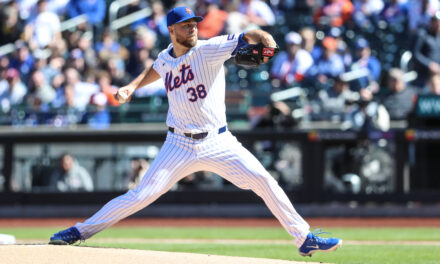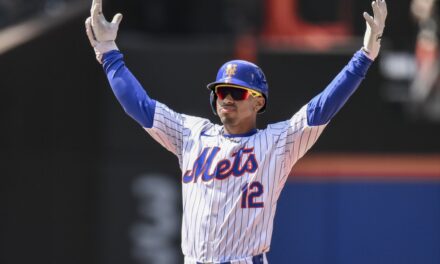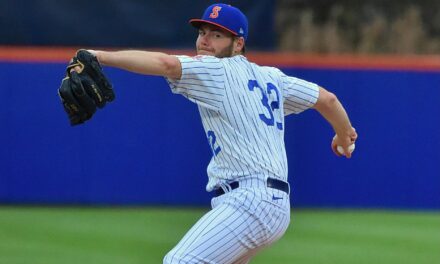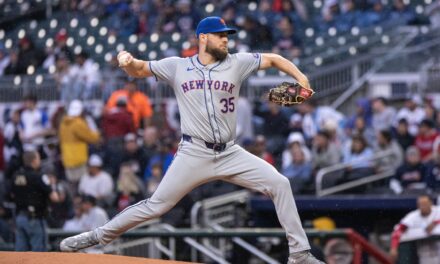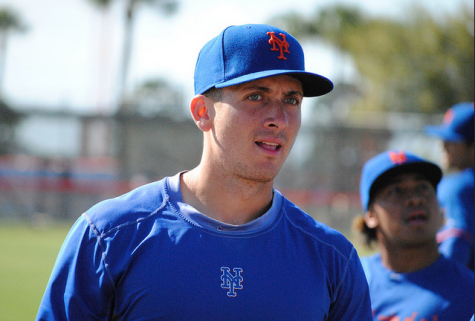
Every so often you might peruse through the Mets minor league statistics, see who’s on a hitting streak, latest pitching highlights, or how the teams are faring in the standings. I for one love to go on MiLB.com and dissect some minor league numbers, as all of us try to predict who might have a future with our beloved ball club.
Which makes me wonder, why do some players that clearly have commendable stats to be given a chance to prove their worth, not get the call-ups? Why are some players perennially stuck in a baseball limbo if you will, between Double A and Triple A? Especially when said players have distinguished their abilities not just in one season, but over several productive years.
A name I’ve been hearing about for some time now is Thomas Javier Rivera, or T.J. Rivera for short. Rivera was undrafted out of Troy University in Alabama in 2011, and a week later signed on with the Mets as a free agent. It’s surprising no one took a chance on Rivera in the draft, in the three years he played college ball at Wallace Community College and Troy University, Rivera put up a combined slash line of .320/.368/.466, good for an OPS of .834. He only struck out 51 times in 631 at-bats, and in his senior year at Troy, he had 24 walks compared to 14 strikeouts.
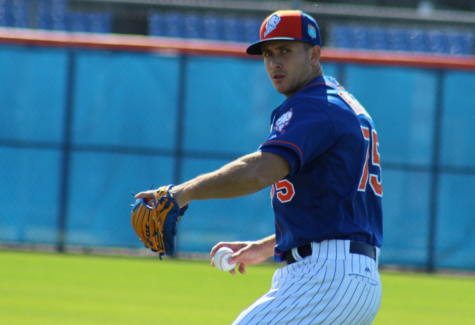
Since his time in the Mets farm system, Rivera has been a jack-of-all-trades, playing all over the infield throughout the various minor league levels. His best statistical position appears to be second base, where he owns a lifetime fielding percentage of .975. He’s not the fleetest of infielders, yet he can hold his own quite well wherever he’s placed. Binghamton Mets hitting coach Luis Natera spoke about Rivera’s fielding prowess last season.
“He’s a steady fielder,” Natera said. “He’s not a Gold Glover, but he’s steady, can turn a double play. He has average range, he just needs to be a little quicker.”
What’s appealing about Rivera besides his versatility in the field is his bat, and penchant for getting on base. Here’s Rivera’s OBP the last four seasons in the minors:
2015 – .364
2014 – .388
2013 – .348
2012 – .372
Rivera’s minor league OBP is .366, which is rather impressive when comparing to current members of the Mets infield. Wilmer Flores for example had a minor league OBP of .334. Ruben Tejada had a .338 OBP. Newly acquired Neil Walker’s was .323. Only Lucas Duda (.380) and David Wright (.391) had higher minor league career OBP than Rivera.
The 2014 and 2015 seasons were two of his best statistical years. Splitting time between St. Lucie and Binghamton in ’14, Rivera compiled a slash line of .349/.388/.446, with an OPS of .834. He also knocked in 75 runs, and scored 70 times. In ’15, Rivera split time with Binghamton and Las Vegas, where his stat line was .325/.364/.449, with an OPS of .814. Rivera’s RBI total was down from the previous year at 48, but he still scored 63 runs.
Clearly his offensive abilities has stayed very consistent year in and year out. Last year, when speaking to the NY Post, ex-Mets vice-president of player development and scouting Paul DePodesta had this to say about Rivera’s offense.
“He’s just a really good baseball player who has excellent barrel control,” said DePodesta. “He centers up more baseballs than most anybody in the minor leagues.”
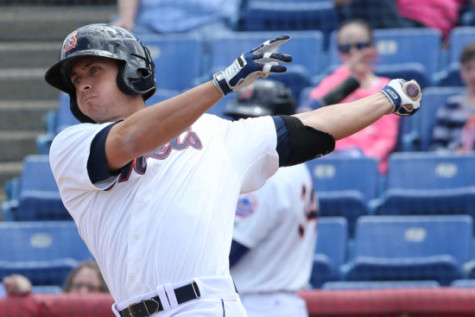
Unfortunately for Rivera it doesn’t seem like he’ll get a chance with the Mets. He’s moved down the totem pole of backup infielders, with guys like Matt Reynolds, Dilson Herrera, Gavin Cecchini, and Ruben Tejada holding precedent over him. And now with Flores being the super utility guy on the team, Rivera might need a change of scenery to get a shot at the big leagues.
Rivera should hope for a chance at the big leagues soon, even if that’s not with the Mets. When he played with Binghamton last year, he was 1.6 years older than the average Double A player. Rivera turned 27 when the Mets opened their World Series bid against the Kansas City Royals on October 27th.
Rivera understands that his chances are growing smaller with the rise of infield prospects the Mets have along with the exciting middle-infield talent at lower levels such as Amed Rosario, Luis Carpio, Milton Ramos, Luis Guillorme, and Gregory Guerrero. Here’s what Rivera said last year on how he’s had to prove himself every year, especially considering he went undrafted.
“I figured it was going to be a little harder for me to move up the rankings. I knew that coming in, so I was expecting I had to prove myself over and over.”
Rivera seems to have a positive attitude while he goes about doing what he does best, hitting for a high average and getting on base. He was invited to spring training as a non-roster invitee for the first time this year, which has to raise his hopes up some. If nothing else, he provides added insurance for the Mets in the minor leagues, and hopes to make an impression, whether that’s with the only team he has been apart of, or with another. The Spring offers a chance for him to showcase his talents to a plethora of scouts in attendance, with hopes of maybe someday exhibiting those gaudy on-base numbers in the Major Leagues.


